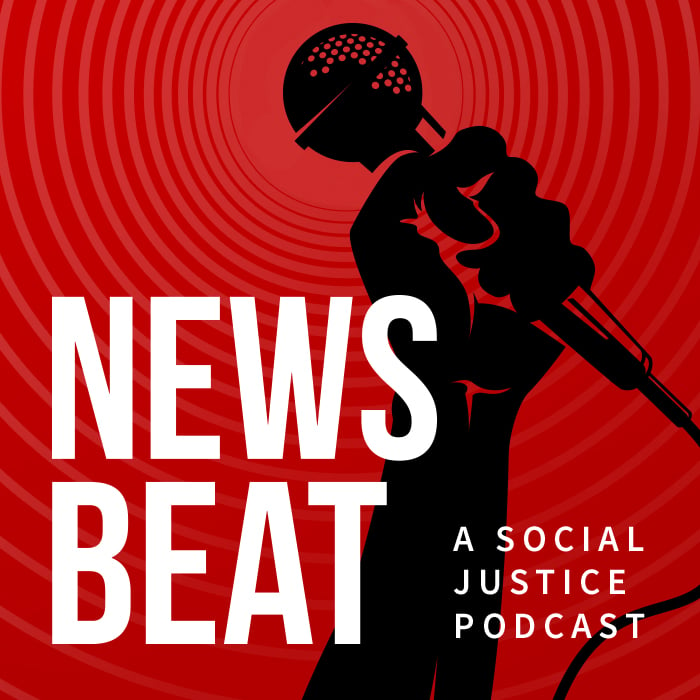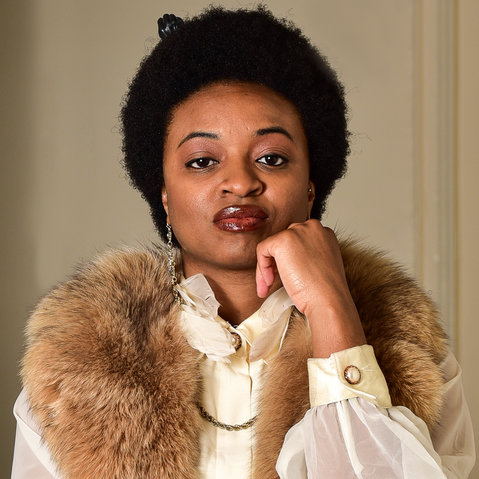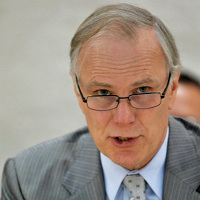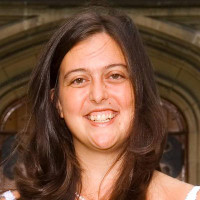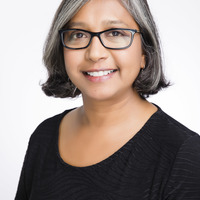The economic devastation was so prevalent that financial woes were impacting everything from healthcare to sewage treatment.
His tour of this particular nation just happened to coincide with a debate over the largest tax overhaul in a generation—a proposal that most analysts said would overwhelmingly benefit the wealthy. Officials were also in the early stages of debating dramatic cuts to welfare. The two policy proposals, taken together, would seemingly do little to improve the lives of 40 million people living in poverty.
Indeed, Alston was touring the United States, which is dangerously close to deepening its ever-widening income inequality gap, he warned, citing tax breaks for the rich and the expected erosion of an already precarious social safety net.
In stark contrast to the rose-colored portrait of an economically thriving nation portrayed in the media and across President Donald Trump’s Twitter feed, Alston’s depiction illustrates how elected officials are failing to leverage America’s immense wealth to solve America’s poverty problem.
Alston’s stop in Alabama was particularly insightful. He toured areas with no functioning sewage system, and reported a re-emergence in hookworm disease, which is prevalent in developing nations. Worse still, Alston noted, there was no evidence officials were tackling the problem, in any demonstrable way.
Simultaneously, Rev. Dr. Liz Theoharis was crisscrossing the nation as co-chair of the modern day Poor People’s Campaign. She also visited Alabama, and found similar problems. In Detroit, which is emerging out of bankruptcy, tens of thousands of people live without running water, she said. In Los Angeles’ Skid Row, approximately 1,800 homeless people are living on the streets.
“Just all across this nation there’s a real crisis—a crisis of wages, a crisis of housing, a crisis of the lack of healthcare, the lack of adequate food and education,” Theoharis said.
The pair of tours illustrates the striking divide between the haves and have-nots in America, with the haves prospering at a historic rate.
In the first three years after the 2009 economic collapse, the top 1 percent netted 95 percent of the income gains, while the middle class hasn’t received a raise this century. Median household income is actually lower than it was since the 1980s. And according to a Pew Research Center analysis, the wealth gap between upper-income households and low-and-middle families are “at the highest levels ever recorded,” with the disparity even wider among white and black families.
The income gap is even more pronounced when you consider that the richest 1 percent own 40 percent of America’s wealth.
The news is exceedingly worse for the poor. Forty million Americans currently live in poverty, and about 20 million are mired in “extreme poverty.” Experts insist that poverty does not discriminate by race or gender, though the majority of poor people are white. However, African Americans are disproportionately impacted, especially black children, about half of whom are impoverished. The chances of falling into poverty are greater for women and children, whom represent 70 percent of the poor in America, Theoharis said.
Despite mounting evidence that millions are suffering, and striving to rise out of poverty, critics of welfare programs note that the poverty rate is actually on the decline. The United States Census Bureau last September said the poverty rate decreased 0.8 percent in 2016 from the previous year. Historically, the rate has fluctuated between 11 and 15 percent over the last half-century, according to the Center for Poverty Research at University of California, Davis.
But the federal poverty baseline may be providing an incomplete picture of just how rampant poverty has become, experts warn.
Theoharis, who is also co-director at the Kairo Center for Religions, Rights, and Social Justice, said 80 percent of Americans at some point in their lives struggle to make ends meet, and that 64 million working people—about 20 percent of the nation—earn less than $15 an hour.
Even for those with comparatively decently paying jobs, appreciable wage gain has been elusive. There’s currently 13 states with hourly minimum wages equal to the federal rate of $7.25, and two states—Georgia and Wyoming—have a basement pay rate of $5.15, which was the federal standard in 1997. The federal minimum wage hasn’t increased since 2009.
According to official federal guidelines, a four-person household earning $24,600 annually is considered poor. Again, the numbers—and the government’s guidelines—are only part of the story.
The Economic Policy Institute (EPI) said a family of four living in Morristown, Tennessee, a city with a population of 29,00 people, would require annual earnings of $49,114 just to get by. The same size family living in Washington, D.C. would need to make $106,493, researchers said. EPI notes that federal guidelines haven’t changed since they were enacted in 1963, aside from accounting for inflation adjustments, calling the federal poverty line “woefully outdated.”
“The average homeless person in this country is a 9-year-old white girl, that’s the face of homelessness,” said Theoharis, underscoring how poverty is far more widespread than the stereotype suggests.
News of potent job growth and a historically low unemployment rate belies the economic stress felt by many Americans. And the dire straits confronting millions of U.S. citizens comes amid a new tax law that calls for millions of dollars in cuts for the rich, efforts to undermine or completely repeal the Affordable Care Act, and renewed calls for work requirements for Medicaid beneficiaries. Trump’s effusive cheers about high-performing 401 (k) accounts likely do not resonate with most Americans, since nearly half the country does not have money invested in retirement plans.
Alston’s trek across the United States, with stops in Washington, D.C., Los Angeles, West Virginia, and Hurricane Maria-devastated Puerto Rico, coincided with debates over the Trump’s tax overhaul. The proposed law (which later passed Congress), he said, “stakes out America’s bid to become the most unequal society in the world.”
“The United States is one of the world’s richest, most powerful and technologically innovative countries,” Alston said in a preliminary report issued after his visit. “But neither its wealth nor its power nor its technology is being harnessed to address the situation in which 40 million people continue to live in poverty.”
Moral Revival
In an interview with News Beat podcast, Alston recalled “pretty grimm” conditions that in some cases reminded him of the situation in Third-World countries.
His observations underscore how the United States has yet to reconcile how a country with such wealth has struggled to remake the lives of its neediest citizens.
“Perhaps one of the main differences, in a sense, is that those Third World countries would always plead that they simply don’t have enough resources to do things differently,” Alston said.
Alston’s visit happened to coincide with the revival of Martin Luther King, Jr.’s Poor People’s Campaign. The movement has been spearheaded by Theoharis and Rev. William Barber, among other religious leaders and grassroots organizations.
Just before King’s life came to a violent end, he envisioned the Poor People’s Campaign as a legacy-defining movement because he sought to unite people of all races, whites, blacks, Latinos and Native Americans, to push the U.S. government to act.
Fifty years later, Theoharis and Barber’s movement, officially dubbed “Poor People’s Campaign: A National Call for Moral Revival,” is picking up where King’s initiative left off.
“He identified the triple evils—this is what he called them—of poverty, of racism, and of militarism,” Theoharis said of King’s campaign. “He identified those problems and he said…the way to kind of solve those problems, [is] for poor people across race and geography to organize.”
Starting on Mother’s Day 2018, the modern day movement will embark on 40 days of nonviolent civil disobedience, culminating with a massive demonstration in Washington, D.C.
The nation’s capital serves as both a symbolic and practical setting for the new campaign.
Although King was shot dead on April 4, 1968, an estimated 3,000 people descended there by the busload, erecting an encampment called “Resurrection City” atop 15 acres near the National Mall. The diverse gathering included poor blacks from the South, whites from Appalachia, Latinos, and Native Americans—a diverse cross-section of America’s economically devastated.
This year, organizers hope to awaken a recalcitrant Congress that has signaled its intent to rollback welfare programs.
“We’re going to have to get back next year at entitlement reform, which is how you tackle the debt and the deficit,” House Speaker Paul Ryan (R-Wis.) said during a radio appearance last December.
Theoharis and others are hoping to reclaim the messaging.
“The goal of the Poor People’s Campaign is twofold,” Theoharis told News Beat podcast. “One is to shift the narrative about poverty in this nation and shift the narrative around what is really morality in this country. And to stop blaming people and dividing people for the problems they’re experiencing. And to actually have a serious, grown-up conversation on poverty and racism, on the war economy and on ecological devastation.
“And then the goal is also to build power of people from the ground up, from grassroots and states across the country,” she continued. “And a lot of why that’s the goal right now is because that’s the way that movements begin.”
Those fighting on behalf of the poor recognize that stereotypes play a oversized role in America’s overall perception of poverty. The notion that poor people, especially blacks and Latinos, were taking advantage of the welfare system, took hold in the ’50s and ’60s, when welfare was being expanded to minority communities, said Premilla Nadasen, professor of history at Barnard College.
Previously, welfare, under a program known as Aid to Families with Dependent Children, which is now called Temporary Assistance to Needy Families, overwhelmingly supported single white women, with little controversy.
By the mid-20th century, however, “Welfare increasingly admitted African American women and Puerto Rican women as recipients and this is the same moment when welfare becomes increasingly controversial,” said Nadasen, who is also co-founder of Scholars for Social Justice.
“A lot of this is rooted in the idea that African American women are undeserving of welfare assistance,” Nadasen added. “That in fact, if jobs are available they ought to take those jobs instead of receiving welfare assistance.”
In the 1970s, the racialized stereotype of the so-called “Welfare Queen,” began to take hold, and it was eventually popularized by President Ronald Reagan, Nadasen noted.
“I think it’s important to understand that it’s actually rooted in an earlier period and a long-standing assumption about how African Americans are targeted of public assistance more broadly,” she said.
Nadasen notes, however, that policies that further disenfranchise the poor emanate from Democrats and Republicans alike. The 1994 crime bill and the 1996 welfare reform bill, for instance, were bipartisan measures enacted when Bill Clinton was in the White House. Both laws, she said, criminalize the poor.
“The 1994 crime bill increased federal funding for prison construction, it give states a lot more money to incarcerate people,” Nadasen said. “And I think the ’96 welfare reform bill is a form of criminalization. By cracking down on welfare recipients, by having these mandates, by greater surveillance, it simply made it much harder for people to get on welfare assistance.”
Moving Backwards
Experts have credited President Lyndon B. Johnson’s “Great Society” and “War on Poverty” for making positive strides for the poor. But Johnson’s presidency was also met with intense race riots that spread throughout the country. As a result, Johnson convened a panel of lawmakers, who formed what became known as the Kerner Commission, to look into the root causes of the civil unrest. The final report, which became a bestseller, famously concluded that America was moving toward two societies, “separate and unequal.”
Fifty years later, a new report has been released that said child poverty has actually worsened, and that more people are in deep poverty than there were when the Kerner Commission was convened.
The new findings underscore how the issue of poverty is a persistent one that has yet to be fully addressed, and that the politics of welfare are often an impediment to progress.
“There are a lot of assumptions that people who receive welfare assistance or food stamps are lazy and don’t want to work, and that’s why we have had this emphasis and focus on work requirements in welfare reform efforts,” said Nadasen. “In fact, the vast majority of welfare recipients are working, or have worked.”
She argues that welfare had functioned as it was supposed to: as a safety net for people cycling in and out of the job market—and that for many recipients, it’s a veritable lifeline.
Nadasen cited a University of Michigan study that tracked welfare recipients over decades that found upwards of 90 percent of those in the program were in and out of welfare programs. The findings suggested that recipients worked for periods at a time, but periodically lost their jobs.
“They might lose their job because a child gets sick or their car breaks down and they will get fired,” Nadasen said. “And whatever crisis in their life is going on, they resolve that and they go back out and they look for another job.”
Theoharis of the Poor People’s Campaigns believes the best way forward may be too include the communities impacted the most by poverty.
Detroit-based Michigan Welfare Rights created a water affordability program, for example. Or lawmakers can look to the diverse coalition of unions involved in the Fight for $15 movement.
“There’s these actual programs and policies that poor people themselves are coming up with that would really change situations for people, and life for people, on the ground,” Theoharis said.
Alston, the United Nations’ Special Rapporteur on Extreme Poverty and Human Rights, said the biggest challenges going forward are philosophical.
“I think the starting point is the fact that the United States comes in lowest or almost lowest in almost all of the key statistics relating to social well-being when compared against all of the other rich countries,” Alston said.
The Organization for Economic Cooperation and Development, he added, consistently ranks the United States at the bottom of about 30 countries in terms of life expectancy, child mortality, and child nutrition.
“Even healthcare, the United States spends vastly more than any other country and yet the healthcare outcomes are dismal,” he added. “You wouldn’t choose to live in the United States if you were making your decision solely on the basis of decent healthcare. So I think that lays the groundwork for the basic challenge which in my view leads to the conclusion that the best way to improve the well-being of the whole society is to indeed adopt a more sustained approach that aims to improve the conditions at the bottom.
“That gives you a better educated workforce, it gives you less drug and alcohol and other forms of dependency, it gives you more reliable and better skilled workers, it enables the United States to compete more effectively. So rather than seeing such social spending as money down the drain it should be seen as it is in other western countries as a solid investment in the economic well-being of the country.”
